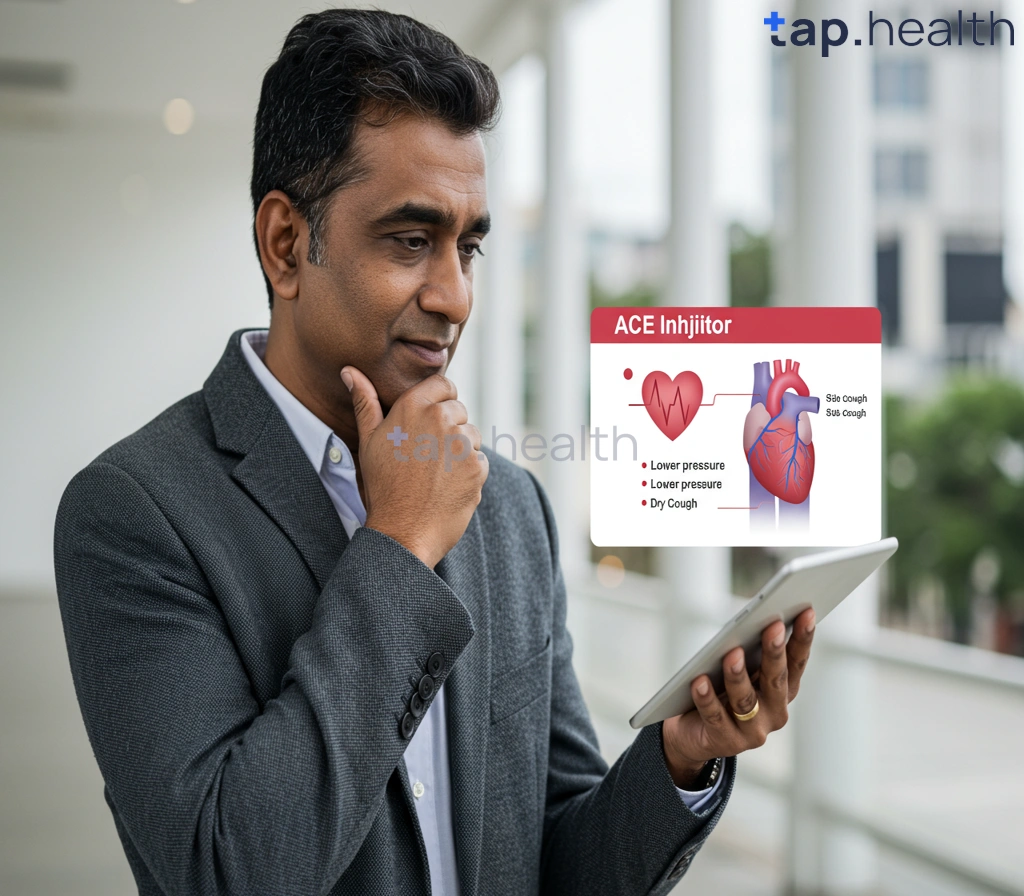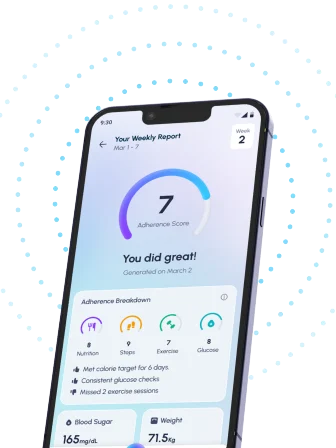Table of Contents
- Understanding Diabetes & Fast Heartbeat: A Complete Guide
- What Causes Tachycardia in Diabetics? Symptoms & Triggers
- Managing Diabetes-Related Tachycardia: Effective Strategies
- Fast Heart Rate with Diabetes? When to Seek Medical Help
- Diabetes and Tachycardia: Prevention and Lifestyle Changes
- Frequently Asked Questions
- References
Living with diabetes often means navigating a complex landscape of symptoms and challenges. One often-overlooked aspect is the potential for an increased heart rate, a condition sometimes referred to as diabetes-related tachycardia. Understanding Diabetes-Related Tachycardia: Symptoms, Triggers & Management is crucial for effective diabetes management and overall well-being. This blog post will delve into the causes of this rapid heartbeat, explore common symptoms you should be aware of, and provide practical strategies for managing and preventing it. Let’s unravel the connection between diabetes and a racing heart, empowering you to take control of your health.
Understanding Diabetes & Fast Heartbeat: A Complete Guide
Experiencing a fast heartbeat, or tachycardia, is a common concern, especially for individuals managing diabetes. In India and many tropical countries, this concern is amplified by the high prevalence of hypertension among diabetics. Over 60% of people with diabetes in India also have hypertension, according to the International Diabetes Federation, highlighting the critical link between these conditions. Understanding the interplay between diabetes and tachycardia is crucial for effective management.
Symptoms and Triggers of Diabetes-Related Tachycardia
Symptoms of tachycardia include a racing heart, palpitations, dizziness, and shortness of breath. These can be exacerbated by various factors in individuals with diabetes, including high blood sugar levels (hyperglycemia), dehydration, infections, and stress. Poorly controlled blood glucose can directly affect heart rate, while dehydration can further strain the cardiovascular system. In hot and humid tropical climates, these triggers can be even more pronounced, necessitating extra vigilance.
Managing Diabetes-Related Tachycardia
Effective management focuses on controlling blood sugar levels through diet, medication, and regular exercise. Maintaining adequate hydration is also essential, especially in warmer climates. Regular monitoring of blood pressure is crucial, given the high comorbidity rates between diabetes and hypertension in regions like India. If you experience frequent or severe tachycardia, consult your doctor immediately. They can help determine the underlying cause and recommend appropriate treatment strategies, potentially including medication to manage both your blood sugar and heart rate.
Taking Control of Your Heart Health
Prioritizing healthy lifestyle choices is crucial for managing both diabetes and tachycardia. This includes adopting a balanced diet, regular physical activity tailored to your condition, stress management techniques, and consistent monitoring of your blood sugar and blood pressure. Remember, proactive management can significantly improve your quality of life and reduce the risk of complications. Consult your healthcare provider for personalized advice and support. For more information on the challenges of managing diabetes as you age, see our guide on Managing Diabetes as You Age: Challenges and Solutions. Also, learn about protecting your heart with Protect Your Heart from Diabetes: 5 Essential Steps.
What Causes Tachycardia in Diabetics? Symptoms & Triggers
Understanding the Link Between Diabetes and Tachycardia
Diabetes significantly impacts the cardiovascular system, increasing the risk of various heart complications. One such complication is tachycardia, a condition characterized by a rapid heart rate. This heightened risk is partly due to the long-term effects of high blood sugar levels which can damage nerves and blood vessels. The prevalence of this complication is further exacerbated in regions like India and other tropical countries, often due to pre-existing health conditions and lifestyle factors.
Symptoms and Triggers of Diabetic Tachycardia
Symptoms of tachycardia in diabetics can be similar to those experienced by non-diabetics, including a racing heartbeat, palpitations, shortness of breath, dizziness, and chest pain. However, the underlying cause is often linked to poor blood sugar control. Triggers can include hypoglycemia (low blood sugar), hyperglycemia (high blood sugar), dehydration, infections, and stress. Furthermore, the presence of diabetic nephropathy, a kidney complication affecting nearly 30% of diabetics, can further complicate the situation and increase the risk of tachycardia. Early detection and management are crucial. Understanding How Does Diabetes Affect Blood Flow? can provide further insight into this complex relationship.
Managing Tachycardia in Diabetics
Effective management of blood sugar levels is paramount in preventing and managing tachycardia. This includes regular monitoring of blood glucose, adherence to prescribed medication, and a healthy lifestyle including regular exercise and a balanced diet suitable for the Indian and tropical climate. Consulting with a doctor for regular check-ups and prompt treatment of any underlying conditions, such as infections, is crucial. Staying hydrated, especially in hot and humid climates, is also essential. Seeking immediate medical attention if experiencing severe symptoms is highly recommended. Remember, proactive management can significantly reduce the risk and severity of tachycardia complications in diabetics. For a deeper understanding of the connection, read more about Does Diabetes Cause Tachycardia?
Managing Diabetes-Related Tachycardia: Effective Strategies
Understanding the Problem
Experiencing a rapid heartbeat (tachycardia) alongside diabetes is a serious concern, especially prevalent in hot and humid climates like those found across India and other tropical countries. This is because high temperatures and dehydration can exacerbate existing diabetic complications, leading to increased heart rate. For individuals with diabetes, maintaining optimal blood pressure is crucial; many guidelines suggest aiming for a target below 130/80 mmHg, though some may recommend below 140/90 mmHg. Managing tachycardia effectively requires a multi-pronged approach focusing on both blood sugar and blood pressure control.
Effective Management Strategies
Maintaining healthy blood sugar levels is paramount. Regular monitoring, adhering to a prescribed diet plan, and consistent medication (if necessary) are essential. Regular exercise, even short walks, can significantly help in regulating blood sugar and heart rate. However, avoiding strenuous activity during peak heat is crucial in tropical climates. Staying well-hydrated is also key; dehydration can trigger tachycardia. Managing stress through techniques like yoga or meditation can positively impact both blood sugar and heart rate. Finally, regularly checking your blood pressure and consulting your doctor at the first sign of tachycardia is essential. For more comprehensive tips on diabetes management, check out our guide: 10 Proven Tips to Effectively Manage Diabetes | Simple Guide.
Seeking Professional Help
If you experience frequent or severe episodes of diabetes-related tachycardia, immediate medical attention is necessary. Consult a doctor or diabetes specialist to discuss tailored management strategies. They can help you refine your medication, dietary plan, and lifestyle choices to better control your blood sugar and blood pressure, ultimately reducing your risk of tachycardia. Remember, proactive management is vital in preventing serious health complications in tropical climates. Learning 10 Proven Tips for Effective Diabetes Management can be a great first step in this process.
Fast Heart Rate with Diabetes? When to Seek Medical Help
Experiencing a fast heart rate, or tachycardia, alongside diabetes can be alarming. While a normal resting heart rate varies, a consistently elevated rate (tachycardia) warrants immediate attention, especially in individuals managing diabetes in hot and humid tropical climates common in India and other South Asian countries. These conditions can place added stress on the cardiovascular system. Remember, a fasting blood sugar level above 126 mg/dL indicates diabetes, a condition that can directly impact heart health. Prediabetes, with blood sugar levels between 100–125 mg/dL, also increases your risk.
Recognizing the Symptoms
Symptoms of diabetes-related tachycardia can include a racing heart, palpitations, dizziness, shortness of breath, and chest pain. These symptoms might be exacerbated by factors like dehydration (common in warmer climates), high blood sugar levels (hyperglycemia), and even hypoglycemia (low blood sugar). It’s crucial to monitor your blood glucose levels regularly and note any correlation between blood sugar fluctuations and heart rate changes. Keeping a detailed log can aid your doctor in diagnosis.
When to See a Doctor
Seek immediate medical attention if you experience sudden, severe tachycardia accompanied by chest pain, fainting, or difficulty breathing. Don’t hesitate to consult a doctor if you notice a persistent increase in your heart rate, even without severe symptoms, particularly if you have a history of heart problems or diabetes complications. Early diagnosis and management are crucial in tropical climates where pre-existing conditions can be further strained by heat and humidity. Regular check-ups with your physician are paramount for effective diabetes management and the early detection of any cardiovascular issues. In India and similar regions, access to healthcare varies; proactive care is essential. Managing underlying conditions like high cholesterol is also vital; learn more about how to How to Manage Cholesterol Levels with Diabetes?. Furthermore, dietary choices play a significant role. Consider reading about Can Fast Food Cause Diabetes? to understand how your food choices can impact your blood sugar and overall health.
Diabetes and Tachycardia: Prevention and Lifestyle Changes
Understanding the Link
Tachycardia, or a rapid heart rate, can be a concerning complication for individuals with diabetes. While not directly caused by diabetes itself, it’s often linked to underlying conditions exacerbated by poor blood sugar control. For instance, high blood sugar can damage nerves, leading to autonomic neuropathy, which affects heart rate regulation. Similarly, uncontrolled diabetes increases the risk of heart disease, a major contributor to tachycardia. Lifestyle modifications play a crucial role in mitigating this risk.
Lifestyle Changes for Prevention
Up to 80% of Type 2 diabetes cases can be delayed or prevented through lifestyle changes. Research supports this, highlighting the significance of proactive measures. In Indian and tropical countries, where diabetes prevalence is high, adopting these changes is especially vital. This includes maintaining a healthy weight, focusing on a balanced diet rich in fruits, vegetables, and whole grains, and incorporating regular physical activity into your daily routine. Prioritizing these lifestyle changes can significantly reduce your risk of both diabetes and related complications like tachycardia. For more information on preventing long-term complications, check out our article on How to Prevent Long-Term Complications of Diabetes: Easy Tips.
Actionable Steps for Indian & Tropical Climates
Consider incorporating culturally relevant foods into your diet. Many traditional Indian dishes feature vegetables and spices with known health benefits. Regular walks, yoga, or other forms of exercise suitable to the tropical climate can be easily integrated into your daily life. Remember to consult your doctor or a certified diabetes educator to create a personalized plan suited to your specific needs and health status. Taking proactive steps today can significantly improve your long-term health and well-being. And to learn how new technology can assist in managing your diabetes lifestyle, read our blog on How Can New Technological Advances Improve Diabetes Lifestyle?.
Frequently Asked Questions on Diabetes Tachycardia
Q1. What is diabetes-related tachycardia?
Diabetes-related tachycardia is a rapid heartbeat that occurs more frequently in people with diabetes, especially those living in hot climates with high blood pressure. It’s often triggered by high blood sugar, dehydration, infections, or stress.
Q2. What are the symptoms of diabetes-related tachycardia?
Symptoms include a racing heart, palpitations, dizziness, and shortness of breath.
Q3. How can I manage diabetes-related tachycardia?
Effective management focuses on tightly controlling blood sugar through diet, medication, and exercise. Maintaining hydration and regularly monitoring blood pressure are also crucial. A healthy lifestyle is vital.
Q4. When should I seek immediate medical attention for tachycardia?
Severe tachycardia requires immediate medical attention. If you experience symptoms such as a very rapid heartbeat or shortness of breath, contact your doctor or seek emergency medical help immediately.
Q5. How can I prevent diabetes-related tachycardia?
Preventing diabetes-related tachycardia involves managing your diabetes effectively, maintaining a healthy lifestyle (including a balanced diet, regular exercise, and stress management), and staying well-hydrated. Regular checkups with your doctor are also important.
References
- A Practical Guide to Integrated Type 2 Diabetes Care: https://www.hse.ie/eng/services/list/2/primarycare/east-coast-diabetes-service/management-of-type-2-diabetes/diabetes-and-pregnancy/icgp-guide-to-integrated-type-2.pdf
- Your Guide to Diabetes: Type 1 and Type 2: https://www.niddk.nih.gov/-/media/Files/Diabetes/YourGuide2Diabetes_508.pdf




